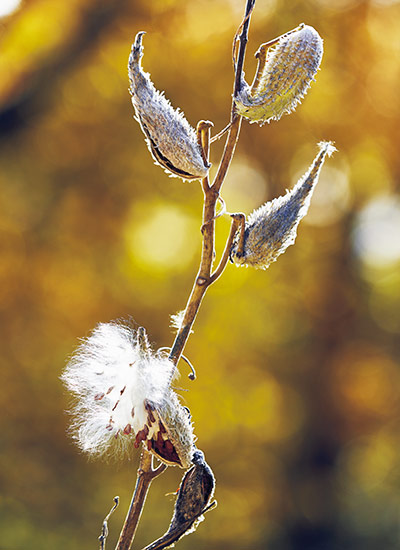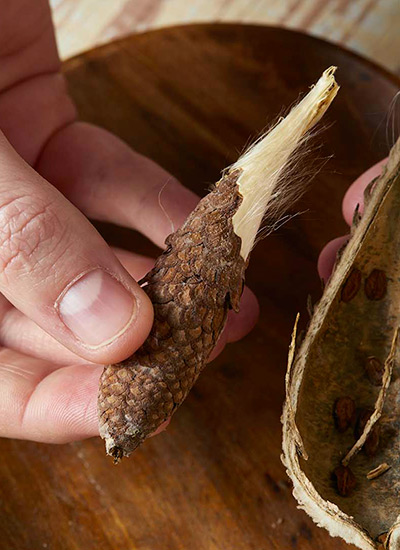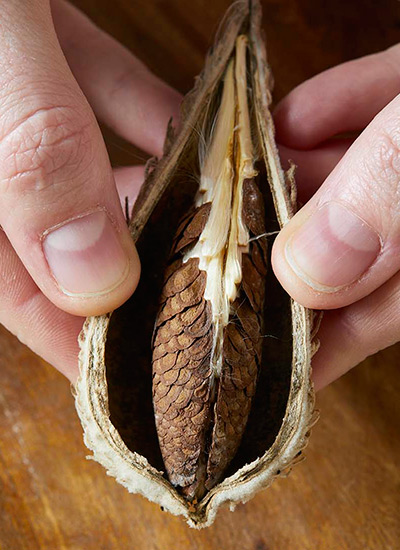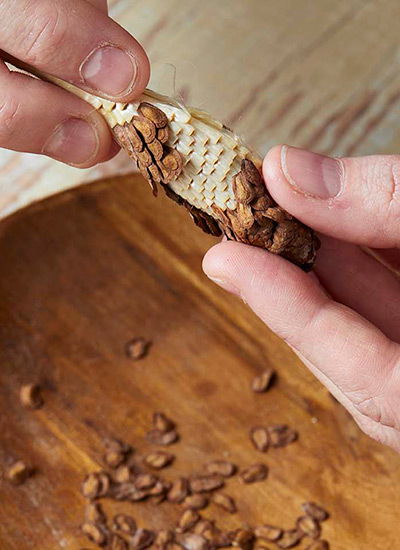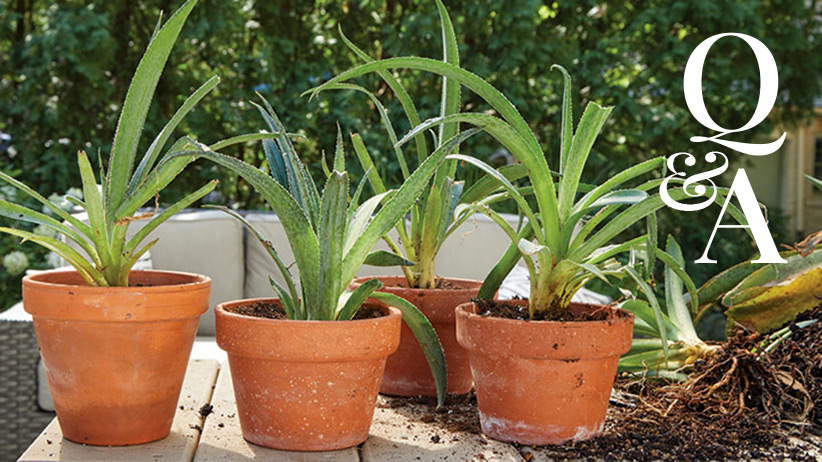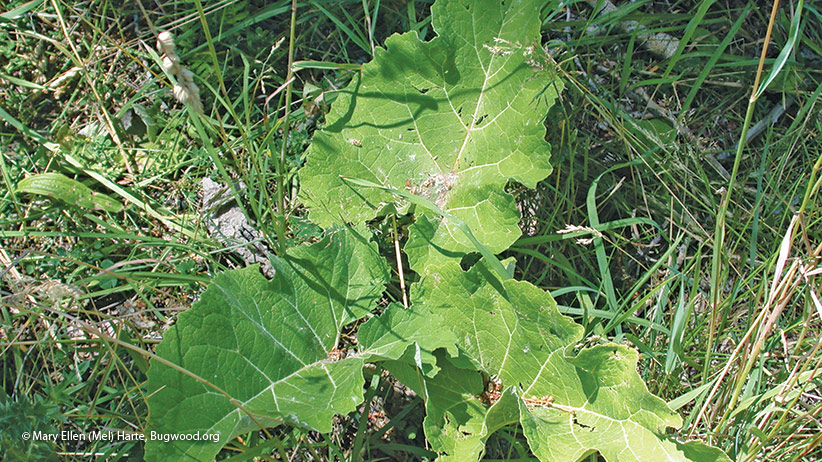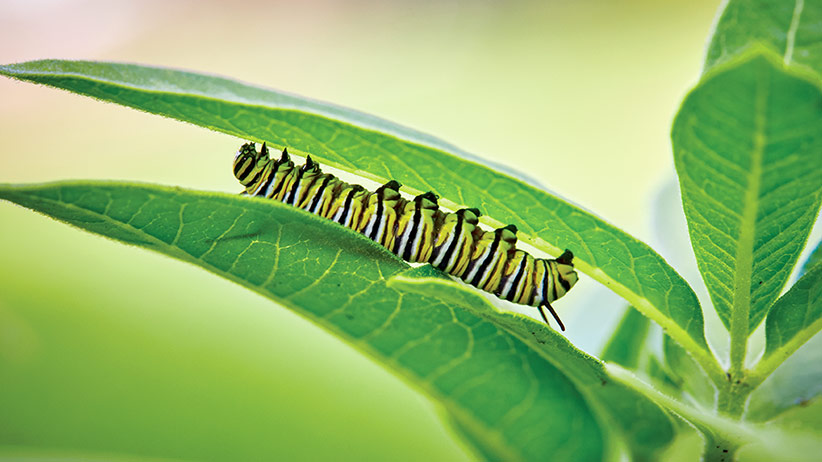
Support monarch butterflies with milkweed
Want to help stop the decline of monarch butterfly populations and bring more of these fluttering beauties back into your garden? Plant milkweed — it’s the sole food source for monarch caterpillars and is attractive to many pollinators for its nectar-rich flowers.
Where to buy native milkweed seeds & plants
The Xerces Society can help you find a seed source in your area. Visit their Milkweed Seed Finder here for more information.
- High Country Garden, 800-925-9387
- Prairie Moon Nursery, 866-417-8156
- Prairie Nursery, 800-476-9453

Growing milkweed
You can plant milkweed starter plants or plugs purchased at specialty nurseries like the sources listed above. Any species in the milkweed family will do, but the easiest to grow is the common milkweed, Asclepias syriaca. Plant them in full sun in groups of three to six spaced 6 to 24 inches apart scattered around your garden. Smaller groupings are less prone than mass plantings to insect or parasite infestations or predators. Also keep in mind that milkweed plants have some toxicity — so keep them out of places where livestock may graze and don’t let pets or children chew on them.
It’s also easy to collect milkweed seed (be sure to ask property owners first) and start it yourself. Scroll down to the gallery for our tips on how to collect the seeds from the pod.
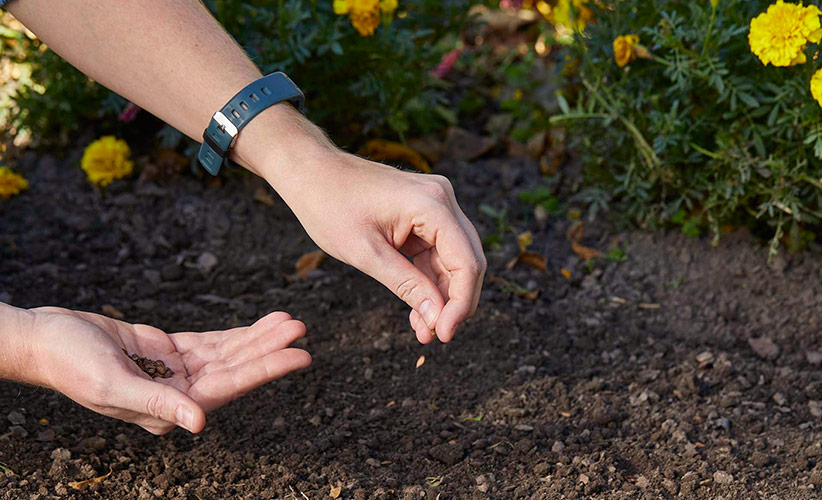
Planting milkweed seeds
Milkweed seeds need to be stratified to help them germinate. Stratification is when a seed is moistened, chilled or frozen and thawed, breaking down germination inhibitors on the seed coat, such as waxes, hormones, oils or heavy coats. Milkweed seed planted in fall is naturally stratified. Spring-planted seeds need to be pre-chilled in the refrigerator, which replicates the natural process of snow and cold breaking down the seed casing.
Planting milkweed seeds in fall
Plant seed in fall in a sunny location. Simply sprinkle seeds on well-tilled soil and pat them down, add a topdressing of soil, and water them in. Fall-sown seed will be naturally stratified outside.
Planting milkweed seeds in spring
You can plant milkweed seeds in early spring as soon as the soil can be worked, but they will need to be stratified for 2 to 3 months in the refrigerator before planting in spring for better germination.
When emerging milkweeds have three to four sets of leaves, thin seedlings to 6 inches apart.
Starting seeds indoors in winter
You can also start stratified seeds indoors in late winter. Sow 2 to 3 seeds in a pot filled with seed-starting mix, cover with ¼ inch of mix, water lightly and set under lights. Germination takes 7 to 10 days. Plant seedlings outside in a sunny spot when they have 3 to 4 sets of leaves and the ground is warm.
You Might Also Like:
Did You Know You Should Sow these Perennial Seeds in Fall?
6 Fall Perennials Butterflies Love
Use Flower Shapes to Attract Diverse Pollinators
4 Combos Butterflies Love
How to harvest milkweed seeds
See our tips below on how to easily harvest milkweed seeds from the pod.



